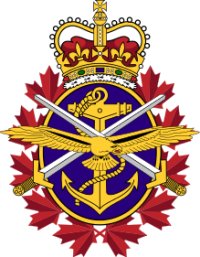Rebecca Jensen’s submission was selected as one of five winners of the 2018 Defence and Security Essay Competition:
Over 12 years, the Canadian military involvement in Afghanistan cost 162 lives, more than 10 times as many wounded, and $18 billion in direct costs. While the tactical capabilities of the Canadian Armed Forces were widely praised, it is unclear what benefit Canada or Afghanistan realized for this steep investment of blood and treasure.
“Operational art” is the term used in defence circles to describe the alignment of tactical accomplishments with strategic ends, since tactical victories alone, as coalition forces have learned in Afghanistan, do not ensure success. The development of a more rigorous approach to operational art in the CAF would help to shrink the gap between tactical accomplishments and strategic stagnation in future conflicts, particularly in coalition missions involving stabilization and development elements.
Operational art connects tactical activities to strategic objectives. Principle elements include the coordination of tactical efforts in space and time to achieve national goals, as well as the balancing of resources and risk. Fighting as part of a coalition, and in complex contingency operations that include elements of stability operations and conventional warfighting, makes the practice of operational art more difficult, as it increases the factors shaping inputs, the environment, and desired outcomes. In particular, it requires coalition members to account for, if not balance, coalition and national objectives, which may differ or even be at odds with each other.
The Canadian army adopted much US thinking about operational art in the 1980s. Confronted by a conflict in Afghanistan very different from that for which it had trained, the CAF reacted similarly, grafting American doctrine and perspectives onto the army’s existing thought and practices. Given the need for rapid adaptation in Afghanistan within an US-dominated coalition effort, this graft made had a pragmatic logic to it, but in the longer term, it is no substitute for the development of organic Canadian thought on the planning and conduct of war.
The publication of Land Operations [PDF] by Canada’s director of army doctrine in 2008 represented an important step in that direction. Crucially, it recognized the complexity of wars like Afghanistan, and the centrality of relationships with other services, nations, and agencies. However, the emphasis on particular end states, and the dualism implicit in the siloing of fires and influence operations, which take place on the physical and psychological planes respectively per the manual, is reductive and linear. When termination criteria include objectives as subjective and complex as a “stable and legitimate host government,” the military can more helpfully plan [PDF] for progress toward that state than be charged with achieving a particular result. While some military activities will be more concerned with influence than maneuver and vice versa, it is similarly unproductive to prompt the military to be aware of the physical and psychological planes. Not only are the moral and the material affected by any action, they are frequently irreducibly interconnected.




